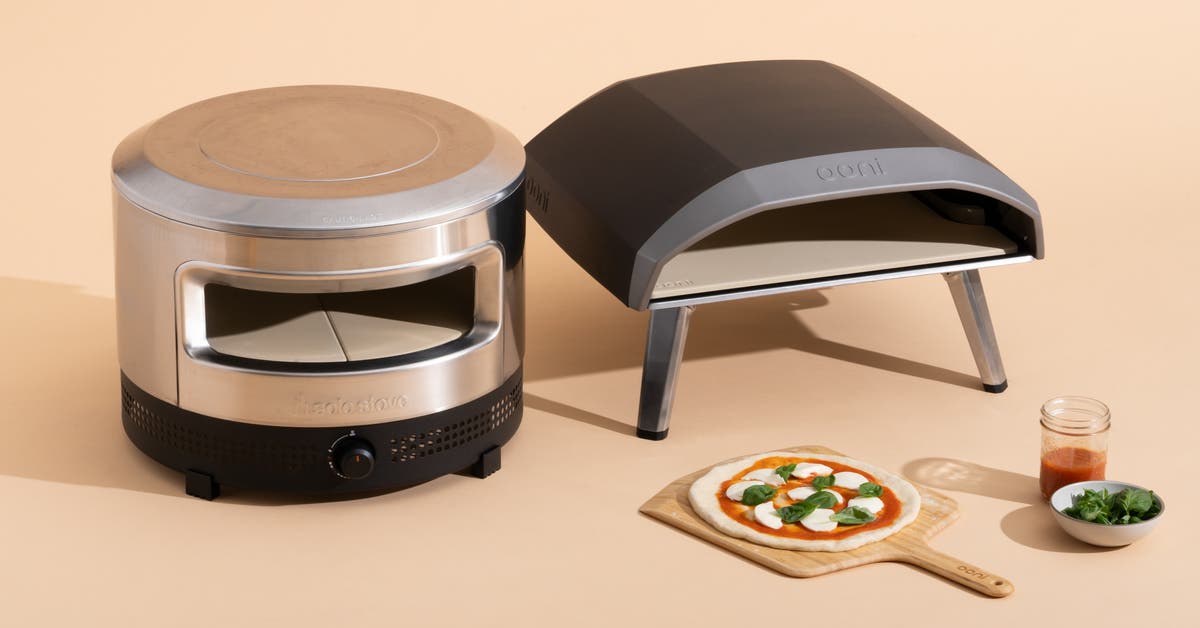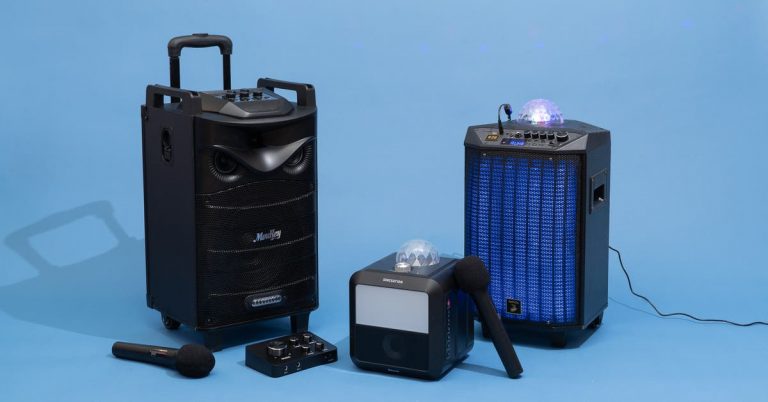The 4 Best Pizza Ovens of 2025

Upgrade pick
If you’re an experienced pizza enthusiast who loves the romance of a wood fire, the ultra-luxe Gozney Dome could be a worthwhile investment. It’s multi-fuel, so it offers the convenience of propane for those busy weeknights, as well as the option to build a wood fire and luxuriate in the centuries-old rhythm of pizza making.
The built-in digital thermometer and many optional add-on accessories are designed to support some pretty major endeavors—think sourdough bread, slow-roasted pork shoulder, and fire-roasted vegetables. But it’s expensive—especially if you’re tempted by all those extras.
It gets incredibly hot. During testing, I tried the Gozney Dome with propane first. While the bigger, thicker stone took longer to heat up than the smaller ovens I tested (about 45 minutes to reach 850 °F), once things were going, the stone retained heat very well, and I was impressed by the burner’s ability to send rolling flames arcing along the top of the dome.
With a stone temperature of around 800 °F, the pizzas cooked in about a minute. And just like our top pick, this oven lost about 100 degrees of heat after each pizza, but it regained those degrees within about five minutes. The Dome is more heavily insulated than our other picks, which helps with heat retention.
It’s spacious. Just like the Ooni Koda 16, the Dome can fit up to a 16-inch pizza, though we prefer making 12-inch pizzas in it. Even with a sizable wood fire burning on one side of the oven, there was still plenty of space to easily maneuver pizzas. The oven opening is 4.7 inches high by 16.1 inches wide, which is a lot narrower than the Koda 16’s uniquely wide opening. But inside the oven, there’s more head height, which was helpful for baking endeavors that involved a cast iron pan.

It works with wood fire. The Gozney Dome really stood out when I lit a wood fire in it. I loved building the fire right on the floor of the oven and tending it as I made pizzas. (But I didn’t love the price of the hardwood kindling it required.)
You need to feed the fire frequently, so there’s a continual arc of flame rolling along the top of the dome. But I found this version of fire-tending much more intuitive than that of the Ooni Karu 12 and its rear-loading firebox.
The wood fire resulted in a stone temperature of around 750 °F, while the ambient temperature was closer to 900 °F (according to the Dome’s digital thermometer). This combination is closely aligned with the Associazione Verace Pizza Napoletana’s oven temperature regulations, which may have explained why the pizzas I made with wood fire were especially gorgeous.
Plus, though it won’t have a strong effect on your pizza’s flavor, the wood smoke sparks a sensory pleasure that is, frankly, written in our DNA.
Gozney sells a wood loader for around $50. But I found that a long (and inexpensive) pair of stainless steel kitchen tongs worked better for maneuvering wood.
It’s easily convertible. The system that Gozney created for switching fuel sources is virtually effortless. The oven’s gas burner is located on the oven floor’s left side, and an ash chute resides on the right. When the gas burner is in use, a stone puck covers the ash chute, and a metal burner guard goes over the gas side to keep food from sliding into the burner.
To switch to burning wood, you remove the metal burner guard on the left, and insert the stone puck over the burner. Then you place a perforated metal tray over the ash chute, over which your fire resides.
I once ran out of propane while using the Gozney Dome, but since several balls of pizza dough were side-eyeing me from my prep table, I decided to quickly convert it to wood-burning mode, because I knew it would be easy. But it did require heat-proof gloves, a few kitchen tools, and an unhealthy level of confidence. Don’t try this at home, folks.
It’s versatile. The Gozney Dome is built for the serious home cook who likes to take on a wide variety of kitchen projects. I roasted squid in a cast-iron pan when I had a wood fire going, and I was delighted by the charred-yet-tender results. But there’s a learning curve and a mystique when cooking with fire: For example, why did the outside of my well-seasoned cast-iron pan catch on fire?
To take advantage of the Gozney Dome’s fullest potential, you may want to invest in accessories like a steam injector for bread baking or a rope-sealed door for slow roasting. But we have yet to test these add-ons, and they’re expensive.

It has a built-in thermometer. The ability to measure ambient temperature was really helpful at times, and the Gozney Dome is the only one of our picks that can do this. We also tested the Ooni Koda Max, which features a similar thermometer (and both ovens also come with optional probe thermometers). But the Koda Max uses propane only, and it doesn’t deliver the same kind of romance as the Dome.
It’s expensive—and you’ll likely still spend on extras. With a starting price of about $2,000, and a long list of irresistible add-ons (I think the $80 cover is non-negotiable), the Gozney Dome is no small investment. But shipping is free, and the five-year warranty helps.
Another expense will be hardwood kindling, if you choose to use wood; regular logs won’t fit, and it’s nearly impossible to make your own bespoke hardwood kindling, unless you work in a wood shop. Most kindling sold in hardware stores is softwood like pine, which doesn’t work for ovens. Gozney sells hardwood, as do other pizza oven companies, but it’s pricey: Gozney states that you’ll use around 7.5 pounds of wood per session, which costs around $15.
Factor in getting a table, too, because this oven is big, and it’s not portable. The Gozney Dome weighs a whopping 128 pounds, and during testing, I needed an extra person to help lift it out of its box and onto a metal prep table. But it arrived virtually assembled, just like our top and budget picks.
You’ll need a relatively large—and very sturdy—non-combustible surface for the Dome to rest on, and you probably won’t want to move it very frequently. Gozney sells a stand for the Dome, but it’s remarkably expensive (around $350). I’m partial to stainless steel restaurant-style prep tables.
If you buy the Gozney Dome, plan on assigning it a designated location, and buy the cover so you don’t have to worry about exposure to the elements. Luckily, it’s attractive enough to merit permanent placement on a back deck.
The stone isn’t removable. Unlike with all of our other picks, with the Gozney Dome you can’t remove the stone to clean it, but this isn’t a big deal. Ovens are essentially self-cleaning because they burn so hot.







